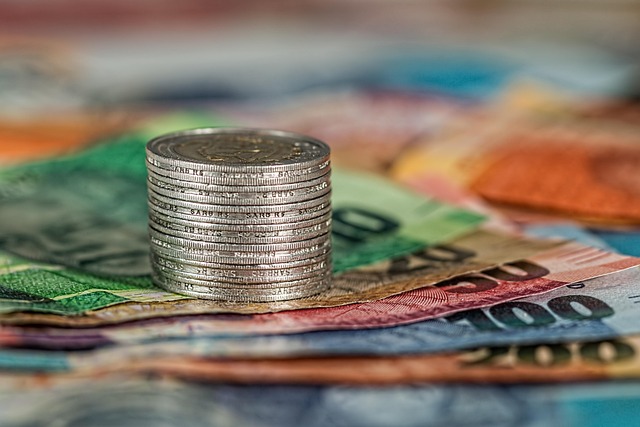
Imagine checking the exchange rate for your upcoming trip to Europe, and suddenly the dollar is much stronger than it was a few days ago. You’re getting more euros for your money, and that café in Paris just got a little cheaper.
That’s currency volatility in action.
While most people see it as a minor annoyance—or an unexpected bonus—savvy traders and investors see opportunity. Currency fluctuations can create powerful ripples in the financial world, and those who know how to ride the wave can profit handsomely.
Let’s break it down.
What Is Currency Volatility?
At its core, currency volatility refers to how much and how quickly exchange rates change between two currencies. It’s influenced by a host of factors—economic data releases, geopolitical tensions, central bank decisions, interest rates, inflation, and even natural disasters.
Think of currencies like seesaws. When one side goes up (say, the U.S. dollar), the other often goes down (like the euro or yen). The more extreme the up-and-down motion, the more volatile the market.
Some currency pairs are naturally more volatile—like the GBP/JPY (British pound vs. Japanese yen)—while others, like the EUR/USD (euro vs. dollar), tend to be more stable.
Why Volatility Isn’t Always a Bad Thing
In everyday life, volatility can sound scary. In the market? It’s a signal—sometimes even an invitation.
Volatility means movement—and movement means opportunity. Whether you’re a day trader, a swing trader, or a global business hedging your risk, these swings are where gains (and sometimes losses) are made.
The trick is to understand it, not fear it.
How to Capitalize on Currency Volatility
1. Trade the News
Major economic events—like interest rate decisions from the U.S. Federal Reserve or employment numbers from the UK—can spark immediate and dramatic currency moves. Traders often try to anticipate these moves or react quickly after news hits.
Pro Tip: Follow an economic calendar. It’ll show you what events are coming and which ones tend to move the markets most.
2. Use Technical Analysis
Charts aren’t just for show. They reveal patterns, trends, and support/resistance levels that can help predict where a currency might head next. Indicators like Bollinger Bands, Relative Strength Index (RSI), and moving averages can help you spot entry and exit points.
Volatile markets love patterns—you just need to know where to look.
3. Diversify Currency Exposure
Investors with international holdings should pay close attention to currency swings. A weakening local currency can eat into your foreign investment returns—or boost them if things go the other way.
Some investors hedge their bets by using currency ETFs, forward contracts, or options to lock in rates and protect against surprises.
4. Use Stop-Loss Orders (Seriously!)
In volatile markets, prices can spike up or crash down in minutes. A stop-loss order helps limit potential losses by automatically closing your position if the market moves against you.
Think of it as your emergency parachute.
Risks to Watch Out For
Currency trading isn’t a get-rich-quick scheme. It can be rewarding, but it’s also high-risk. Volatility can lead to larger profits, but also larger losses—especially if you’re using leverage.
Leverage lets you control a big position with a small amount of money, but it’s a double-edged sword. If the market moves against you, it can wipe out your capital quickly.
The Bottom Line
Currency volatility is like a storm at sea—unpredictable, powerful, and a little intimidating. But if you know how to read the weather, steer the ship, and use the right tools, you can make it work in your favor.
Whether you’re a trader looking for fast action, an investor managing global exposure, or just someone curious about what drives those currency rates on your travel app—volatility is more than just noise.
It’s opportunity in disguise.
FAQs
1. What does “currency volatility” really mean?
Currency volatility means the value of one currency compared to another is changing a lot and often. For example, if the dollar is worth more one day and then suddenly worth less the next, that’s volatility.
2. Why do currencies go up and down?
Currency values change based on things like interest rates, inflation, political events, and news. If a country’s economy looks strong, its currency usually goes up. If there’s trouble—like war or bad economic news—it may go down.
3. Can regular people make money from currency volatility?
Yes, but it takes practice and caution. Some people trade currencies (called forex trading) to try to profit from price swings. But the market moves fast, and it’s risky—so learning and using tools like stop-loss orders is important.
4. Is volatility a bad thing?
Not always. Volatility can be scary, but it also means opportunity. When prices move more, there’s a better chance to make profits—if you know what you’re doing.
5. How can I protect myself from sudden currency changes?
You can protect yourself by using tools like stop-loss orders, hedging strategies, or investing in currency ETFs. These help limit losses if the market moves against you.

“Very informative breakdown! The way you explained market trends makes it easier for beginners to understand.”